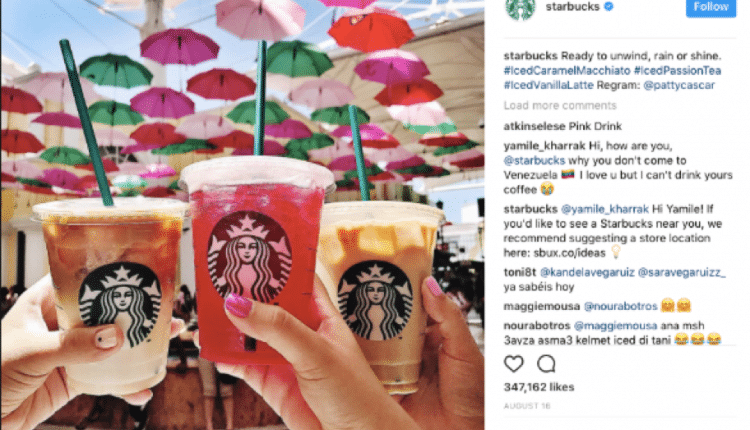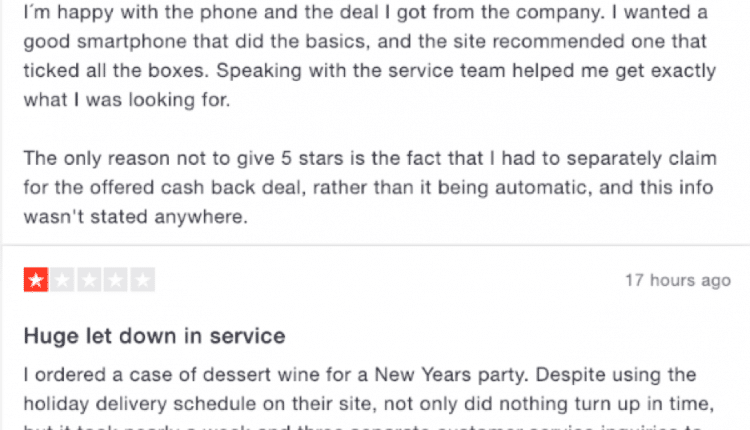You could point out that 88% of online shoppers take reviews into consideration for their purchase decisions. Or that 85% of consumers find visual user-generated content (UGC) more influential than brand photos or videos. Whichever of the litany of stats you want to cite, the fact of the matter is – in 2019, user-generated content should be part of your marketing strategy.
This article will discuss the different types of user-generated content, its benefits, how to leverage them to boost conversion rates, and how to manage bad reviews.
Essentially, user-generated content is any kind of content (images, videos, text, gifs, etc.) created and posted online by unpaid users. It could be an Instagram Story of someone using a particular product, a tweet mentioning a brand, or a product review on YouTube.
While it’s not limited to the aforementioned and what’s below, here are the very basic types of user-generated content:
Images – You see it every day as part of the estimated 95 million photos posted on Instagram per day. It’s that photo posted by your friend of her new restaurant discovery. It can also be an image reposted by a brand as you can see below.

Feedback – This could be any type of feedback posted anywhere online—on people’s feeds, in the comments section, even a short story about a particular dessert can be considered user-generated feedback.
Reviews – While similar to feedback, reviews are often found on companies’ websites, which serve as social proof for other consumers (more on this later).

Source: https://support.trustpilot.com
User-generated content has been found to have 28% higher engagement rate than regular brand posts, while videos created by (and featuring) users get 10x more views on YouTube than branded content. In this age where consumers place increasing value on authenticity and transparency, user-generated content has become one of the most trusted pieces of content.
When users trust the content, this tends to facilitate social exchanges. And as you can see with the changes in Instagram’s algorithm, which values interest, recency, and relationship brands have with users, user engagement has become more important than ever.
Speaking of trust, according to a Nielsen Consumer Trust Index, 92% of consumers trust organic, user-generated content more than they do traditional advertising. This is owed to the unbiased nature of UGC. And because users aren’t being paid for the content, people perceive user-generated content as more authentic and honest.
User-generated content also provides brands with a steady stream of content they can repost and repurpose. While it would only be ethical that brands get users’ permission first, people generally appreciate the attention given when brands use their content.
As you can see below, brands can utilize hashtags to encourage UGC.
Source: https://www.digitaldoughnut.com
When your brand is trusted, it’s much easier to convert. Fashion brand Brownie exhibits how smart ecommerce looks like, integrating user-generated content to their product pages.
Source: https://www.digitaldoughnut.com
Part of the authenticity and trust cultivated by brands is showing products in real-world settings, which could be just what you need to nudge consumers into a purchase. And with 48% of customers saying that UGC is a great way to discover new products, it can also improve your customer acquisition efficiency.
Over 70% of consumers say they look at product reviews before considering a purchase. Because reviews show potential customers how reliable your offerings are, you should encourage customers to leave reviews whenever possible. Apart from allowing it on your site and social channels, invite customers to write on third-party apps like Yelp, Google, and TripAdvisor as well.
You can even incentivize reviews by offering discount codes in exchange for them. Don’t be discouraged when you get negative reviews. They’re part of what makes a brand all the more authentic.
Source: https://www.smartinsights.com
You’ve seen in the Brownie example how creating hashtags for user-generated content makes it convenient to collate UGC. By combining hashtags with contests, you can encourage even more user-generated content. The added bonus of hashtags is that if you get them to trend, this will inevitably increase engagement, build brand awareness, and ultimately, boost sales.
Marc Jacobs, for example, declared that they would cast a model for their next campaign through user-generated content with the hashtag #CastMeMarc. In just 24 hours, the contest already generated 15,000 hashtag entries.
Source: https://www.smartinsights.com
Video has been on top of the content marketing food chain for a while now, and for good reason. Not only can brands incorporate messaging faster with short videos (as opposed to text), its shareability and potential for going viral are also added benefits.
Pampers did a great job for their “Love, Sleep and Play” campaign where they created a video using user-generated content. After asking customers to submit videos of their babies through Facebook, they combined it in a single video that showed babies and their parents playing, falling asleep, and having fun.
As you might expect with anything involving cute babies, the video resonated with the brand’s audience and led to extremely positive feedback.
Source: YouTube
Gamification has always been great at increasing engagement. In gamification, users are required to complete tasks and are rewarded and recognized for doing so. The recognition can come through badges and leaderboards, while rewards can come in the form of special discounts and being part of VIP clubs.
A good example was Nike’s gamification of its Nike+ fueldband app. There, runners tracked their activities through metrics like distance, time, pace, and calories burnt. Then, the app was linked to social media where users shared their results and competed against each other.
Not only was Nike able to increase engagement and create awareness for their app, but they were also able to collect data that they used to further segment their market.
You’re going to need to come up with a unique take on special occasions for you to be able to create a successful seasonal UGC campaign. You’re also going to need to get a good understanding of your audience, what your seasonal goals are, and which platforms this would work best on.
Because they’re a massive brand with an equally large following, Starbucks was able to do this simply with a red cup. Its #RedCupContest encouraged fans to share their customized coffee cups for a chance to win a Starbucks gift card. The catch, of course, is that users needed to purchase their red cups to join. It boosted engagement, awareness, and sales – a win all around.
Source: https://www.smartinsights.com
Of course, it’s never going to be all positive when you put it in the hands of the people. But as mentioned earlier, negative reviews are also part of building brand authenticity. Here are some quick tips for managing bad reviews:
Don’t panic – Sure, it stings, but it’s part of business.
Evaluate the situation – Check if the review is real. Competitors have been found to leave fraudulent reviews. Get additional information to see if you can trace the purchase. This should give you an idea of whether the review is real or not. If you find that it’s fake, then flag it for removal.
Rectify the situation – If it is indeed a real review, respond as quickly as possible. Apologize and own up to the complaint. Offer to address the problem, and if, say, you promise a product replacement, follow up on it.
Negative reviews will always be part of the game. Keep a cool head about it, respond, and learn from whatever mistakes you unearth.
As you can see, there are loads of benefits to utilizing user-generated content. And with user engagement coming at a premium, encouraging your audience to create content for you will do wonders for your overall marketing strategy.